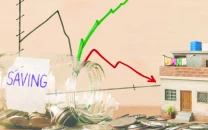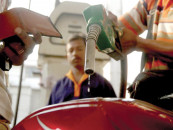Industries default on debt payments
Default cases surged in 1QCY21 despite schemes to get loans deferred and rescheduled

Contrary to the government claim of rebound in industrial output, a number of industries in sectors including leading automobile and sugar have defaulted on paying off debt owed to banks in the quarter ended March 31, 2021.
The default cases have surged in the quarter despite offer of scheme to banks’ clients to get their loans deferred and rescheduled for one year or for more time period to cope with the Covid-19 pandemic.
Besides, the cost of carrying loans have dropped significantly following the central bank’s decision to cut the benchmark interest rate by a significant 625 basis points during March-June 2020 to 7% at present. Past practices suggest the rate of default cases slow down with cut in the benchmark interest rate and vice-versa.
Banks’ non-performing loans (NPLs) increased 5.5% (or Rs44.47 billion) to Rs850.30 billion during January-March 2021 compared to Rs805.83 billion in the same quarter of last year, Pakistan’s central bank reported on the last working day on Friday (May 7) ahead of Eid holidays.
The infection ratio (NPLs against outstanding banks’ credit to the private sector) increased to 9.3% in the quarter compared to 9.1% in the same quarter of last year, as the outstanding loans improved to Rs9.10 trillion in the quarter under review compared to Rs9.02 trillion in the same quarter of last year.
The large-scale manufacturing sector (LSM) output increased by almost 9% in the nine-month (Jul-March FY21) period compared to the same period of last year. Leading sectors including textiles, automobile, iron and steel, fertiliser and chemical helped achieving such growth in LSM in the month, Pakistan Bureau of Statistics (PBS) reported the other day.
READ Circular debt also hits CPEC projects
“The non-performing loans have increased due to slowdown in economic activities during the Covid-19 pandemic,” Pak-Kuwait Investment Company (PKIC) Head of Research Samiullah Tariq said while talking to The Express Tribune.
The new companies which defaulted on payment to banks would have avoided getting their loans deferred and rescheduled under the central bank scheme to cope during the pandemic, he said.
Businesses and households got loans worth Rs910.6 billion deferred and rescheduled since introduction of the scheme in March 2020 to April16, 2021, according to the State Bank of Pakistan.
“Banks may manage to recover non-performing loans and slash infection ratio if the benchmark interest rate remains low and economic activities pick up in the country,” Tariq said.
He said the banks may recover some of the NPLs following the central bank’s revised guidelines in 2020 for recovery of the loans under Corporate Restructuring Companies Act 2016 (CRC). The new guidelines allow banks to sell their bad loans to a third party or pay the parties a commission to help recover the loans. “This is legal and global practice,” he said.
During the quarter under review (January-March 2021), the infection ratio (NPLs against outstanding banks’ loans) of the corporate sector surged to 9.8% compared to 9.2% in the corresponding period of the last year. The ratio of the sugar sector increased to 16.3% compared 15.6%. The ratio inched up to 11.5% in automobile/transportation sector in the quarter under review compared to 11.4% in the same quarter of the last year.
The infection ratio of electronics increased to 19.4% from 18.2%, cement to 3.2% from 2.8% and financial sector’s ratio surged to 5% from 3.7%.
Agriculture sector’s infection ratio remained stagnant at a high 21.8%. The ratio of small and medium-sized Enterprises (SMEs) sector dropped to 17.3% from 18.2%, while the ratio of individual borrowers decreased to 7.5% from 8.4%.
The ratio for auto loans and mortgage loans increased but decreased for credit card and consumer durables.
“NPLs could have been higher, had SBP not allowed banks to consider the deferment and restructuring/rescheduling of loans on borrowers’ request,” SBP said in its Mid-Year Performance Review of the Banking Sector (January -June 2020).
The NPLs to gross total loans had surged to 9.7% in January-June 2020 compared to 8.8% in the same half last year, according to the performance review.
“The general economic slowdown witnessed after the outbreak of Covid-19, the idiosyncratic factors in agriculture, energy, petroleum (OMCs/ oil marketing companies) and cement sectors contributed to the build-up of domestic NPLs. As for the overseas operations, banks continued to face rise in NPLs mainly in the gulf region. Moreover, the disruption in economic activities also hampered the loan recovery efforts of the banks,” the report said.
Published in The Express Tribune, May 12th, 2021.
Like Business on Facebook, follow @TribuneBiz on Twitter to stay informed and join in the conversation.


















COMMENTS
Comments are moderated and generally will be posted if they are on-topic and not abusive.
For more information, please see our Comments FAQ